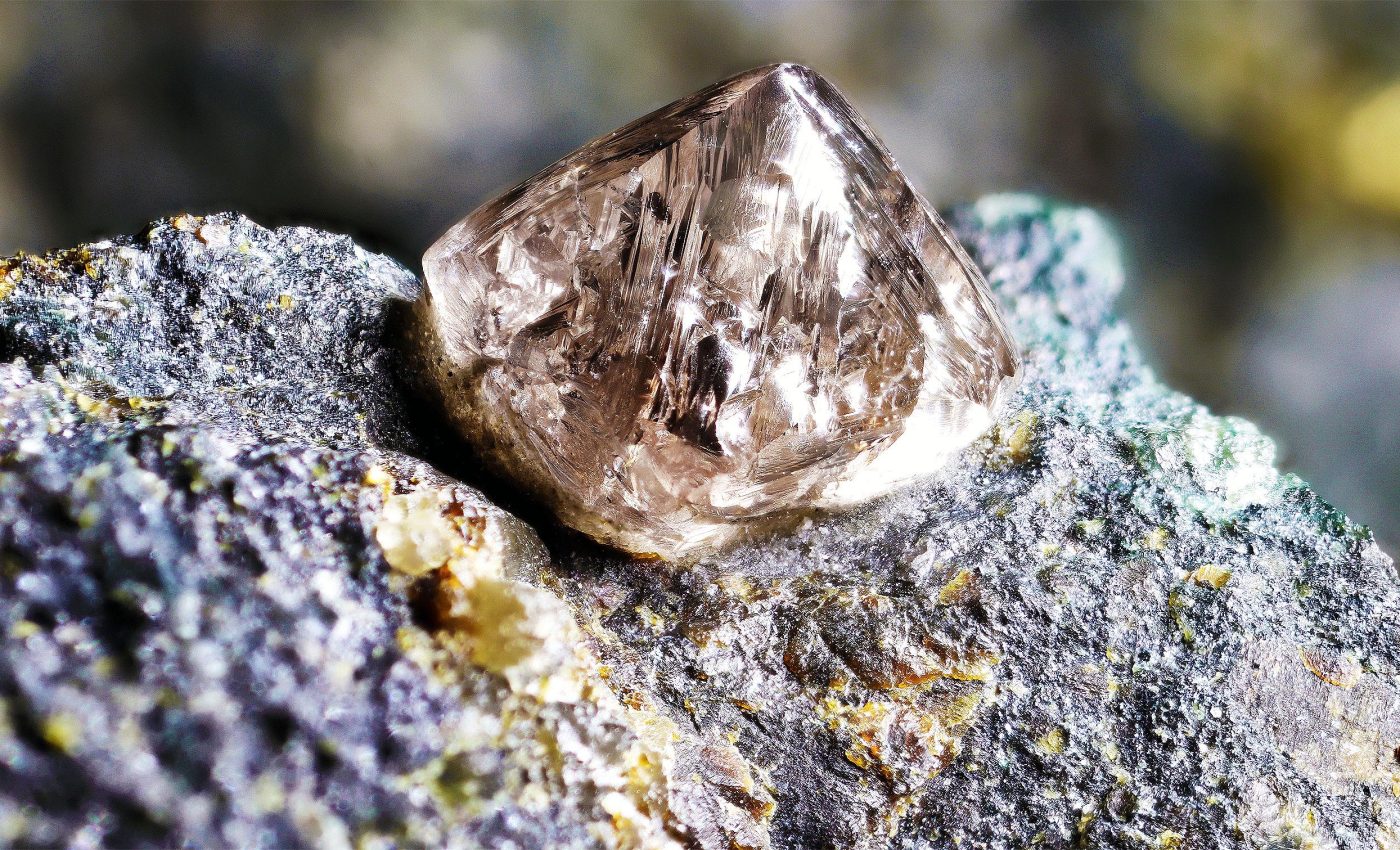
Fountains of diamonds erupt from volcanoes when Earth's continents shift
When you think of diamonds, what comes to mind? The sparkle of a glamorous engagement ring, perhaps, or the cutting edge of a powerful tool. But have you ever stopped to consider where these glittering gems come from?
Scientists have recently made a fascinating discovery about the journey these captivating stones take from deep within the earth to the surface. It’s like a thrilling roller coaster ride, except rather than twists and turns, it involves explosive volcanic eruptions.
Deep and fiery journey
Diamonds are fascinating geological formations that do not exist close to the Earth’s surface. Instead, they form deep within the Earth’s crust, around 93 miles below ground.
When they finally reach the surface, the process is dramatic and explosive, known as a ‘kimberlite eruption.’
This eruption propels diamond-laden rock at impressive speeds, ranging from 11 to 83 mph. This rapid ascent marks the ending of the remarkable journey these precious stones take from their fiery origins to the glittering gems we admire.
Understanding this process enhances our appreciation for diamonds and the natural forces that create them.
Diamonds: The basics
Diamonds are famous for their incredible hardness and stunning sparkle. Made mostly of carbon atoms arranged in a crystal lattice, diamonds rank a perfect 10 on the Mohs scale, making them the hardest natural material out there.
This unique structure is what gives diamonds their brilliant shine and fire when they reflect and refract light.
Besides their toughness, diamonds are also valued for their clarity and color, which can range from perfectly colorless to various shades of yellow or brown.
When it comes to determining a diamond’s value, people often refer to the “Four Cs”: cut, color, clarity, and carat weight.
The cut affects how well the diamond reflects light, while clarity looks at any internal or external flaws. The color scale runs from D (colorless) to Z (light yellow or brown), and carat weight indicates the diamond’s size. All these factors come together to define a diamond’s beauty and worth.
Understanding kimberlite eruptions
Enter Thomas Gernon, a keen-eyed professor of Earth and climate science at the University of Southampton in England, who noticed that these kimberlite eruptions seemed to occur most frequently during periods of significant tectonic shifts, like during the breakup of the supercontinent Pangaea.
Intriguingly, these eruptions often happen in the thick and hard-to-disrupt middle of continents, not the more malleable edges.
“The diamonds have been sat at the base of the continents for hundreds of millions or even billions of years,” Gernon explains.
“There must be some stimulus that just drives them suddenly, because these eruptions themselves are really powerful, really explosive.”
Diamond formation and volcanic eruptions
To understand this stimulus of diamonds and eruptions, Gernon and his team began to investigate correlations between the ages of kimberlites and the degree of plate fragmentation occurring at those times.
Their findings revealed a fascinating pattern: plates start to pull apart, and then roughly 22 million to 30 million years later, kimberlite eruptions peak.
The researchers found that this pattern holds up over the last 500 million years and possibly even the last 1 billion years, despite difficulties in tracing geologic cycles that far back.
For instance, in what is now Africa and South America, kimberlite eruptions increased about 25 million years after the breakup of the supercontinent Gondwana around 180 million years ago.
A similar surge was observed in today’s North America after the rifting of Pangaea began around 250 million years ago.
Eruptions and diamond formation
Seeking to understand what was driving these patterns, the researchers turned to multiple computer models of the earth’s deep crust and upper mantle.
They discovered that when tectonic plates pull apart, the base of the continental crust thins similarly to the crust up top, allowing hot rock to rise, come into contact with this now-disrupted boundary, cool, and sink again.
This process creates localized areas of circulation prone to instability which activate instability in neighboring regions, gradually migrating towards the center of the continent.
This finding aligns well with the pattern of kimberlite eruptions starting near rift zones and then moving to continental interiors.
This upheaval churns together rock with trapped carbon dioxide and water, along with many key kimberlite minerals — including diamonds.
The result is eruptions with explosive potential and buoyancy to drive the diamonds to the surface.
The implications
Gernon’s research could prove useful in finding undiscovered diamond deposits. Beyond the sparkling implications for the diamond industry, these findings help explain why certain types of volcanic eruptions occur long after a supercontinent has broken up in regions that should otherwise be stable.
“It’s a fundamental and highly organized physical process,” Gernon said, “so it’s likely not just kimberlites responding to it, but it could be a whole array of Earth system processes that are responding to this as well.”
In a nutshell, this mind-bending research throws light on the dramatic journey of diamonds from the deep corners of the Earth right to the surface after eruptions.
The next time you gaze at a diamond, remember, it’s not just a pretty face – it’s a geological wonder with a fiery past.
—–
Like what you read? Subscribe to our newsletter for engaging articles, exclusive content, and the latest updates.
Check us out on EarthSnap, a free app brought to you by Eric Ralls and Earth.com.
—–













